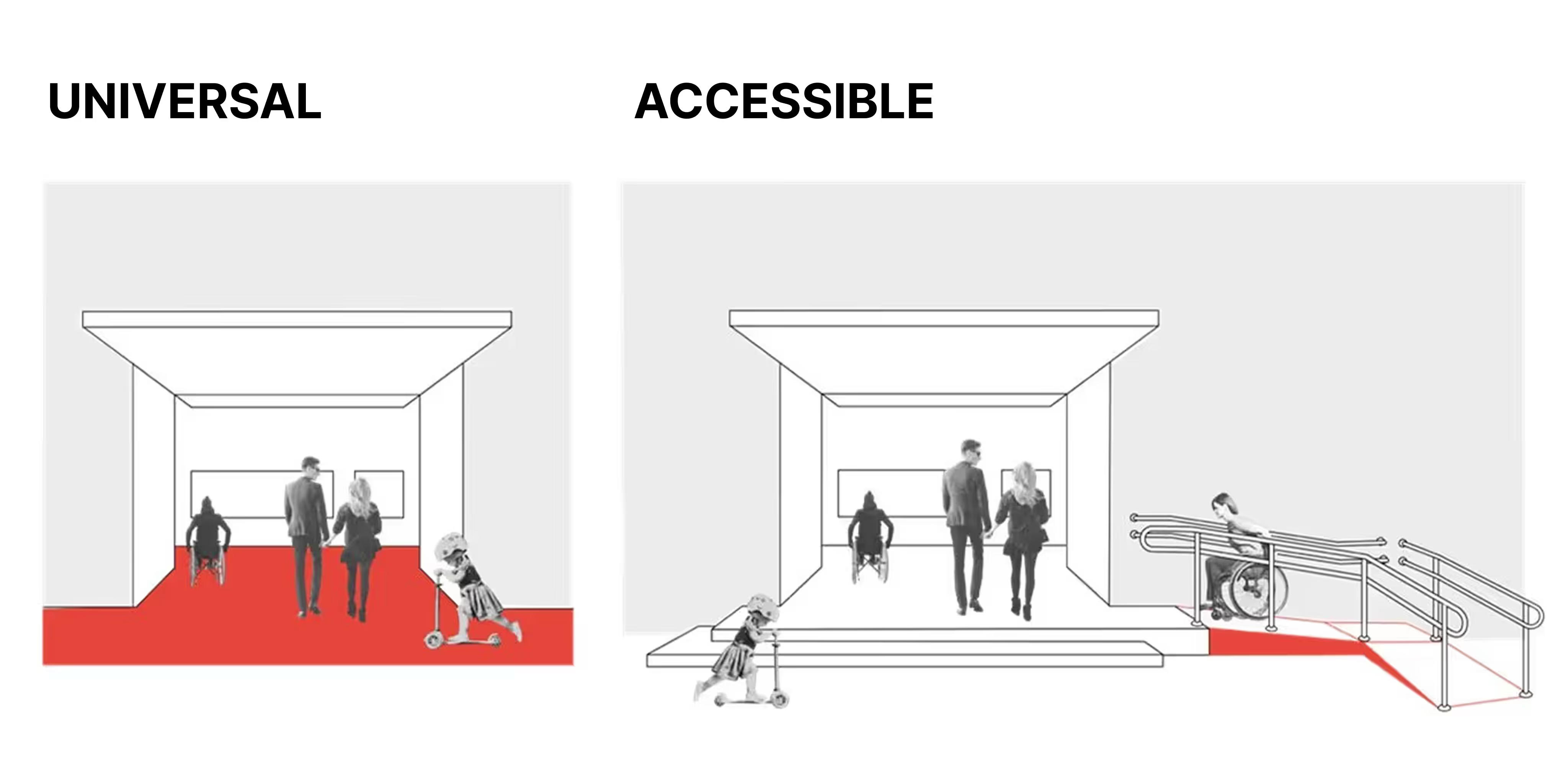
The Barrier-Free Solutions Album was created as part of First Lady Olena Zelenska's initiative “Without Barriers”. The project was implemented by the NGO Bezbariernist in cooperation with the Ministry of Communities and Territories Development of Ukraine as part of the “Integrated Urban Development in Ukraine II” project, which is being implemented by the German government company “Deutsche Gesellschaft für Internationale Zusammenarbeit (GIZ) GmbH” with funding from the governments of Germany and Switzerland.
The developer of the Barrier-free Solutions Album is the Big City Lab urban bureau.
The Barrier-free Solutions Album is a practical guide that recommends and illustrates how the urban environment can be friendly to different users, including people with temporary or permanent health problems, adults with young children, the elderly, people with disabilities and other low-mobility groups.
It was created with architects, construction professionals, human diversity scientists, civil society, and representatives of people with reduced mobility.
The album will be useful for architects, designers, builders, clients, civil servants, activists, and all those who care about the quality of the realisation of spaces. We present four sections of the guide: recommendations for porches and courtyards, streets, public spaces and buildings.
{{slider-2="/sliders"}}
After the start of Russia's full-scale invasion of Ukraine, we adapted the Barrier-Free Solutions Album to the realities of wartime. In the updated version, you will find recommendations that consider security needs. After all, barrier-free access in times of war is not just a matter of a comfortable space for everyone. It is also a matter of security, creating conditions for those who are on leave their homes due to hostilities, and rehabilitating and returning from the frontline.
The injuries sustained by our citizens can lead to permanent or temporary disability. But all people deserve a peaceful life in their city, which should be accessible and comfortable. Cities should be welcoming to everyone, and cannot become obstacles.
The guide is the first of its kind in Ukraine. What is its feature?
The album shows how to apply the values of universal design and accessibility using specific, realistic examples. Designers do not need to study all human diversity. In the introduction to the Album, we explain in simple words what nuances need to be considered to adapt the space for different people.

We separate solutions for new construction and for the transformation of existing space. With this in mind, the structure of the sections is as follows:

In the first chapter, we looked at different scenarios for entrance areas: both physical and contrast, lighting and microclimate scenarios. The guide clearly divides the priority of solutions. For example, a flat entrance is a universal solution, while a raised entrance with stairs and a ramp is an adaptive solution.
To tell about residential courtyards, we have drawn up a matrix of the functions of residents and the areas that correspond to them.
As part of the recommendations for wartime, we focused on the parameters for the entrance hall, doors, and lift - these elements are important for the quick and safe evacuation of the injured.

Here you will find descriptions of different types of streets, intersections and crossings. We describe in detail the accessibility units and options for tactile navigation. In particular, the guide shows how you can divide the sidewalk into separate zones using tactile surfaces. This allows you to create street designs that are intuitive and accessible to people with vision impairments.
In the recommendations for wartime, we described the parameters for free passage in places where anti-tank elements are installed, the contrast of such elements, recommendations for reflective elements in the light masking mode, and emergency assistance boards with automatic defibrillators.

In this chapter, we have considered scenarios according to the needs of people in public spaces. There are recommendations for quiet and active recreation, smoking areas, playgrounds, swimming pools, etc. Attention is paid to universal cabins and childcare rooms, which are relevant in shelters for internally displaced persons and shelters. Additionally, we have added a matrix of coatings with material references to the section to show how to combine coatings to ensure that tactile navigation works and does not interfere with other people.
Our team has developed a matrix of children's actions by age on playgrounds. The manual describes which actions help children of different ages develop specific skills (cognitive, sensory, communicative - depending on the leading activity and the child's age needs at that time).
In the recommendations for wartime, we have drawn attention to sensory relief rooms, which are necessary for people with different types of neurodiversity, for those with post-traumatic stress disorder, autism spectrum disorders, or simply sensitive to sounds and light.

This section describes public buildings (libraries, schools, administrative service centres, coworking spaces, train stations, hospitals and other places where people receive services and have public access) from the perspective of considering the diverse needs of users. It includes recommendations for showers, service or waiting areas, and all horizontal and vertical communications (corridors, lifts, stairs, escalators).
In wartime, such guidelines can be helpful for setting up shelters, temporary hospitals, volunteer centres, etc.

{{book-3="/en/book-banners"}}